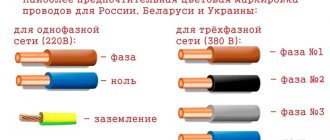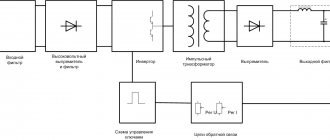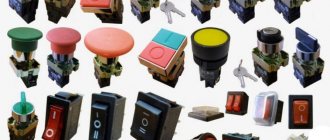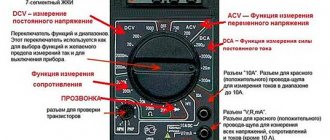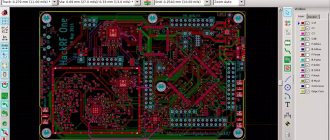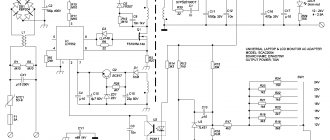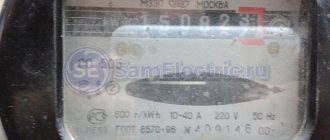Anyone who wants to deepen their skills in repairing, servicing electrical equipment, and performing diagnostic activities needs to know how to use an oscilloscope. An oscilloscope is designed to monitor voltage changes over time. The device is equipped with a moving scan screen showing graphs, amplitude, and sinusoidal oscillations for certain periods.
What is an oscilloscope
An oscilloscope (O-Scope, Oscilloscope) records changes (amplitudes, fluctuations) in the voltages of electrical circuit signals with output in the form of sinusoids, sawtooths and other lines on a coordinate grid on the monitor. The device is used to study the dynamics of a system during its operation. A typical example: testing pulsed, generator devices (power supplies). The oscilloscope will show the shape of voltage, electrical signals over time, the level of fluctuations, changes under certain conditions and factors (breakdowns, temperature, magnetic fields, interference, shielding).
Purpose
O-Scope measures these quantities and solves the following problems:
- test measures for electrical circuits, assemblies, products during their production, repair, in research institutions;
- always used when testing measuring devices;
- electrical, television and radio sphere: properties of signals, degree of noise, distortion;
- for highly specialized hardware, for analyzing automated control systems, executive devices;
- measurements of frequencies and amplitudes during debugging;
- visual monitoring of signals, phase shifts;
- analysis of the functioning of vehicle sensors.
Briefly displaying the functions, the device allows you to observe voltage changes:
- in time: frequency, intervals, duty cycle, cycles, jumps, recessions, bursts;
- in physics: vibrations, amplitudes, max./min. RMS values.
An oscilloscope is the “eye” that allows you to look inside a circuit as it operates. In addition to simple measurement of an electrical signal, modern products can perform mathematical transformations in real time (Fourier, etc.).
Where is it used?
Areas of application:
- always in scientific, technical laboratories, research departments at factories that produce electrical appliances, for example, the manufacturer must know how his products react to interference;
- during in-depth analysis of assemblies, during adjustment and repair of electrical devices: from radio and cellular communications to machine motor circuits. The device is indispensable for radio amateurs.
The device provides visual information about the characteristics of complex signals, shows time and amplitude data of changes, which is important for calculations and determining how the studied object will behave over periods under specific conditions.
What can an oscilloscope measure?
An oscilloscope can measure:
- will show by signals: shape;
- frequency;
- period;
- amplitude;
- phase shift angle;
- comparison of signals;
O-Scope is actually a voltmeter, but it displays online voltage changes; it can be used to indicate the shape of the current by connecting a resistor in series to the network being served (Rt, “t” - current, also shunting). Its Ohm number is selected much lower than that of the circuit so that there is no influence on the circuit. Next, it is calculated using the formula and, knowing the value of Rt, you can find the current.
Areas of use
What an oscilloscope is is well known to everyone involved in the development or testing of electronics components, radio electronics and finished equipment. The scope of application of these devices is very versatile. They are widely used in:
- educational, research laboratories for training electronic engineering students, performing work research;
- automotive industry to test the functionality and identify errors in the operation of electronic systems of cars;
- signal integrity testing process and microelectronics;
- aerospace, defense field for testing communications equipment of radar networks;
- work related to testing systems and devices for compliance with regulatory data in the field of data transmission;
- development, testing of advanced technologies, etc.
The scope of application of the devices is very wide. And the higher the quality of the oscilloscope, the more reliable it will be in operation, and its data will be accurate and correct.
Kinds
Digital models have recording and archiving functions, which expands the possibilities. To compare results online, devices with several channels are used. There are copies connected to a PC and combinations with other measuring devices.
The choice of analog models (except for simple and educational ones) implies knowledge of a variety of settings, the adjustment is complicated. On the other hand, such devices provide in-depth practice.
Digital models are the recommended choice and will allow you to quickly learn the basics. These are computing systems, with them data acquisition and interpretation are easier and much faster. There are also analog-digital models.
Detailed classification of the device
Modern oscilloscopes have a powerful set of measurement applications, deep memory, a touch capacitive display, and the ability to quickly update signals on the display. Familiarization with the classification is an integral step in working with equipment. The equipment is subject to internal division according to purpose and operating logic:
- Strobe.
- Real time or analog.
- Storage: CRT-like analog and digital.
Devices with continuous scanning are included in a separate group. They allow you to record the curve on a special photographic tape. Depending on the number of rays, there are two-beam, single-beam, three-beam and so on. The pinnacle of automation is considered to be 16 beams or more. The parameter affects data synchronization.
Periodic scanning technology is characterized by the following division: stroboscopic, high-speed, conventional and universal, special storage. Digital models are characterized by a combination of several parameters. Less common are oscilloscopes whose purpose is combined with another measuring instrument. Their official name is scopmeters.
You might be interested in this Composition and definition of a capacitor: list of properties and markings
Device
The main unit of the oscilloscope is a tube like in old TVs, a cathode-ray tube that visualizes the quantities received by the input divider, on which the scope of permissible measurements depends. Amplification occurs and synchronization with the scan generator occurs. Next, the value under study reaches the final amplifying node, the CRT, and then it is displayed online without any delays.
The algorithm for how a digital oscilloscope works is somewhat different: it first passes the signal through a converter (analog-to-digital), measuring it several times per second. Then reconstruction and display on the monitor occurs. At the same time, the data is recorded in the buffer memory, and there is the possibility of future processing.
It is more convenient to work with a digital oscilloscope; its advantages are full functionality with additional options in a small case, ease of settings. The choice of an oscilloscope in modern conditions is usually made among the specified types. Some analog old solid Soviet copies (4–5 times cheaper) are not bad, but they are bulky and require more setup skills.
Main settings
To select an oscilloscope, it is recommended to correctly evaluate the following characteristics:
- to eliminate distortion when working with several high-frequency signals, you should purchase a two- or multi-beam device;
- in different models the error is 5-15%, so limited measurement accuracy should be taken into account;
- digital devices are equipped with color screens, various synchronization devices, and additional service modes;
- The functionality of analog devices is more modest, but they are cheaper;
- the limited capabilities of amplitude-frequency converters make it difficult for high-quality digital electronics to process high-frequency signals;
- Freeze mode with zoom function will help you study the smallest details of complex images.
Before a detailed analysis, you need to clarify what exactly the device is intended for. Next, compliance is assessed according to the following parameters:
- bandwidth;
- frequency range;
- input impedance;
- permissible amplitude values (variable and constant components);
- measurement error;
- isolation between channels;
- internal memory capacity (digital technology).
How an oscilloscope works
If you look at quickly passing objects, you will see a blurry line. But if you periodically open the “window”, static frames will be captured. This is the principle of a strobe, the same, but in electronic form the Oscilloscope works.
The action of the “window” is synchronized (the main condition) with the speed of the objects (signal), so when it opens, their place is stable. Otherwise, desynchronization will occur.
The device visualizes periodic changes in real time on the display using a sinusoid or a line of another shape (saw, meander, etc.). Each future segment is similar to the past, it “stops” and is shown (at 1 moment - 1 period).
Story
A functional trigger can be created from a conventional relay with an electromechanical drive. By properly setting the control circuit contacts, the power group is turned on after a certain combination of input signals. A separate key performs a reset.
RS trigger circuit on one relay
Electronic analogues were assembled at the beginning of the last century from lamp devices. The current schemes were first published by Russian and English scientists in 1918-20. Later, semiconductor transistors began to be used. Nowadays, corresponding devices are created using microelectronic technologies.
What to look for in an Oscilloscope, guidelines for selection
Let's look at the basic characteristics of O-Scope, which will also serve as guidelines on how to choose an oscilloscope and its reliable model.
Ways to check the oscilloscope:
- built-in generator (Calibration), all digital models have it. Turn on the mode and see if there is a sinusoid. If the store is specialized, there should be an external generator for testing;
- old oscilloscopes begin to change over time, there is a simple way to check them: take a reference source, for example, the same 1.5 V battery;
- the screen must be of sufficient brightness, the beam must be free of artifacts;
- touch the probe: the phase will show a sinusoid (though with a lot of noise), the ground will show a flat line;
- via PC, special software.
Bandwidth
These are the minimum and maximum frequencies, amplitude, that is, the range that the device can measure. It is enough to take into account the top line; the bottom one is drawn by all devices.
Sampling rate
For digital models. This parameter is related to the previous one. The higher the better (for example, Siglent SDS has 1×109). This number of readings per unit time determines the maximum frequencies without loss on the screen. For devices with several channels, it may decrease when all of them are used (must be taken into account when purchasing).
According to Kotelnikov's theorem, part. disc. should exceed the upper transmission frame by 2 times, but in practice an excess of 4–5 times will be required. This is what the choice is based on. Example for a product with a bandwidth of up to 200–800 MHz (it is important to take into account this parameter when using 2 or more channels).
Number of channels
Many models are capable of processing more signals together while simultaneously displaying them separately on the monitor. Usually from 2 to 4. Sometimes turning on other channels affects performance. It is recommended to choose an oscilloscope among products with two channels, which will allow you to compare the quantities under study and calculate phase shifts. Three or more inputs are good, but for ordinary tasks it is sometimes excessive, the price of the device will increase many times over.
Equivalent sampling rate
When the real part is not enough. discrete, the final image is reconstructed from several successive measurements. Example: a 200 MHz signal is analyzed on a model with a frequency. disc. 1 billion samples/sec. (1 GSa/s) - only 5 measurements are obtained. According to theory This is enough for Kotelnikov, but you can detail it (algorithmically) and activate the option: there will be not 1 GSa/s, but 2 GSa/s.
Memory depth
Always available in digital models (DSO=Digital Storage Oscilloscope). The lower the sweep speed, the more accurate the readings and the more values the device has to store in memory. The deeper the memory, the better. But sometimes there is a negative point: during slow measurements, the device slows down; when choosing a product, you need to inquire about this nuance.
Screen update
The more often the monitor is updated, the shorter the “dead time” required to process the captured information, and the more quickly the waveforms are updated. There is a greater chance that the device will show a subtle artifact. However, this only matters for electronics fans.
Maximum input voltage (supply)
Any device has a limit on power supply, if it is exceeded without additional measures it will simply burn out and fail. It is necessary to take into account the parameters of the serviced circuits. Example: max. eg in the probe mode 1:1 - 40 V, in the 1:10 mode - 400 V, that is, it is no longer safe to climb into a circuit with 400 V or more without safety measures.
Beginning of work
Working with an oscilloscope using an analog device is described in more detail. As an object of study, you can use simple models: an extremely simple educational oscilloscope n3013 or the popular S1-83. Digitally everything is the same, but it unifies and generalizes some points.
In the Oscilloscope beam tube, beams of electrons going to the display provoke the glow of the phosphor (light dot in the middle). Deflection plates (2 pairs) make it possible to drive it. The higher the voltage at the terminals, the more it moves. The applied stress to the formation. X (vertical) initiates a sawtooth scan, the beam runs cyclically (this is the scan or zero line). To the layer Y connect the quantities under study.
Synchronization
Before working with an oscilloscope, you need to learn the basics (control, connections, what probes, etc.). The main point of interaction is synchronization. If the start of the saw (the leftmost position of the beam) and the signal coincide, then 1 scan pass will show 1 or more periods and the image will seem to freeze. Changing speed sweeps make it so that there will be only 1 segment on the scoreboard: for 1 lane. saws will pass 1 lane. analyzed signal.
Synchronization methods:
- The saw and the signal are synchronized, adjusting the speed with the selector until the sinusoid stops
- The level is set, the input voltage is indicated to activate the generator. The saw will appear only when the value is set, synchronization is automatic. It is necessary to take into account interference: it can activate the generator erroneously (the level is too low), if it is very high, the signal will not start the system.
You need to know the following:
- the horizontal displacement of the beam is directly proportional to time;
- vertically - proportional to the voltage being tested.
Connection
An oscilloscope does not have two separate probes, like a multimeter. There is one cable with 2 branches, conductors (voltage is measured between 2 points), plugged into a socket with 2 terminals. If the device has more than one socket with them, then the device is two or multi-channel.
Two terminals:
- for phase - connected to the input of an amplifier that deflects the beam vertically;
- common (ground, minus) - connected directly to the device body.
In foreign devices, the wire with the “crocodile” is the ground, the phase is a needle, which is poked into the contacts of the circuits being tested, into the legs of microprocessors, etc. In domestic products, the wires are often the same. You can find out the purpose by touching them with your hand: minus (ground) - there is a straight line on the screen, phase - a distorted sinusoid.
You cannot use any probe wire - in an oscilloscope these are only coaxial special products, any other cable will show nonsense.
A simplified algorithm of use, how to connect to the analyzed circuit and conduct research:
- The oscilloscope is placed in a convenient place, the handles are brought to the normal or neutral position.
- If you have a calibrator, you need to calibrate it according to the instructions.
- The earth is planted on the “−” or common core in the circuit under study. If they cannot be determined, they are connected to any of the contacts between which the study is being conducted. The signal is poked according to the scheme.
The device displays the voltage on the probe in relation to the general wiring. Some of these cords (directly on them) have dividers 1:0, 1:100 with on/off toggle switches, allowing you to plug the ends directly into 220 V without risking burning the device.
Input mode
The regulator with a straight line and, below it, a wavy line is the input mode. Upper position - it is permissible to apply any voltage. Medium—allows you to set the scan. The lower position is only for a variable value, and the connection is made through the built-in capacitor.
Example: it is necessary to analyze the interference on a power supply with 12 V, its intensity can be up to 0.3 V. It is not noticeable against a background of 12 V. You can increase the coefficient. along Y, but the graph will go beyond the monitor, and the offset will not be enough to observe the vertex. Then we include a capacitor in the circuit and 12 V will settle there, and a variable value will go into the O-Scope - 0.3 V of interference, the visualization will be enhanced and the full scale will be examined.
Fast start
The screen is marked with lines with divisions Y (vertical) and X (horizontal) - this is a Cartesian coordinate system, their selectors (large and noticeable) are the main controls:
- Gain (V/div, volts/div) - Scales the Y axis to view the entire signal, and also tells you how many volts per division will ultimately be displayed. Example: if there is 2 V per division, and the signal occupies two cells in height, then the amplitude is 4 V; when selecting 1 V and supplying a sinusoid ampl. at 0.2 V it will take 4 cells;
- Duration (Sweep) - frequency adjustment. Here the divisions are in ms and μs. The smaller the gap and the greater the frequency, the higher the high-frequency signal can be seen and by its width you can calculate how many cells it is, and multiplying by the scale. along line X, we get its duration in seconds. You can calculate one period, then the frequency value - f=1/t. This knob is for setting the beam speed on the display left/right. In digital devices there is a solid line. The signal arriving through the input deflects the beam up/down: a wave-like sine wave, saw or other line shape appears, displaying noise and interference.
The expand key and the arrow keys will allow you to move the graph across the screen for ease of perception and to adjust the desired area to the grid squares. And by changing the speed and frequency of the beam (sweep frequency), we achieve synchronization and freezing of the image.
Measuring voltage
To reduce errors, since observation is visual, it is recommended that the graph occupy 80–90% of the monitor. When measuring voltage and frequency (there is a time interval), it is necessary to place the gain and sweep speed controls in the extreme right positions.
Procedure
Voltage is measured by vertical scaling. Algorithm:
- Before starting, connect the probe signal to its own ground wire (needle to “crocodile”) or set the input mode toggle switch to the “ground” position.
- The “pulse of a corpse” will be displayed, if not, then you need to move the offset, stabilization and level - perhaps the image was hidden and did not start.
- We use the selectors to adjust the shift of the strip to zero and use the “up-down” regulator to set the scan to the horizontal grid, so it will be possible to correctly calculate the height of the oscillogram. If the oscilloscope is old or analog, then you need to let it warm up for about 5 minutes.
- We set the voltage measurement limit, it is recommended to take it with a reserve, then you can reduce it.
- A signal is given to the input (or its switch is moved to one of the operating positions). A graph will appear on the monitor.
- Let's illustrate the process: the battery has 1.5 V, if you touch the ground branch of the probe to its minus, and the signal branch to the plus, then a graph jump of 1.5 Volts will appear.
To find the height of the graph, move the oscillogram with the selector so that the mark by which the amplitude is calculated is on the central vertical with fractions. We get the sensitivity of the deviation - 1 v/div, the size of the oscilloscope. - 2.6 div., and hence ampl. = 2.6 V.
Below is an illustration on an analog device: 3.4 div. — max. voltage. The next picture shows vertical scaling. The “smooth” regulator (the part with the green mark) is in the right limit position, the sensitivity toggle switch is 0.5 V/div. Scale multiplier — ×10. Voltage calculation:
Historical fact
Initially, electrical oscillatory processes were recorded on paper, and you won’t believe it, manually. For the first time, Jules Francois Joubert (1880) decided to automate the process. It was he who determined that the signal must be recorded step by step. Joubert's method was developed and improved by the Russian physicist Colley and the Frenchman Blondel, respectively, in 1885 and 1893. The first oscilloscopes had high inertia, which did not allow recording fast processes. This drawback was eliminated by William Duddell, who created a light-beam oscilloscope, in which a mirror served as the measuring element, and readings were taken on a special plate sensitive to light. The pinnacle of development of the method is a multichannel strip oscilloscope. 1899 - I. Zenneck adds a horizontal scan to the device, which makes the device more consistent with a modern oscilloscope.
Frequency measurement
Frequency is a time characteristic, intervals, periods of a signal; their measurement is the direct purpose of the oscilloscope. The value under study is always inversely proportional to its period, which can be measured in any area of the oscillogram. But it is more convenient and more accurate to do this at the points where the graph intersects the horizontal line in the center (time axis).
Before the study, set the scan strip to the central horizontal line. Using a handle with an arrow in both directions, we shift the beginning of the period with the leftmost strip on the monitor. In our case, the gap = 6.8 div., speed. sweep - 100 μs/div. Calculations:
Above, two similar pictures show the same signals, but at different scan rates. According to the first image, the frequency calculation (the exact value is 1.459 kHz) has a large error, while according to the second, it is smaller, since greater measurement accuracy is obtained by stretching the image.
In the second figure, the period is slightly greater than 6.8 cases. and the frequency in reality is slightly lower (1.459 KHz) than the received one (1.47 KHz). The deviation is less than 1%, this is acceptable and is considered high accuracy; it will be provided by a digital O-Scope (with linear scan). In analog models the deviation would be higher. A characteristic pattern: as the period increases, the frequency decreases (the proportion is inverse), and vice versa.
Settings
Most oscilloscopes have a built-in calibration device (calibrator), the purpose of which is to generate a control signal with known and stable parameters. Typically such a signal is in the form of a square wave with an amplitude of 1 V, a frequency of 1 kHz, and a duty cycle of 2 (50% duty cycle); the calibrator signal parameters are usually labeled next to the calibrator signal output. If necessary, the user can connect the measuring probe of the channel of vertical or horizontal deviations of the device to the output of the calibrator and see the calibrator signal on the oscilloscope screen. If the observed signal differs from that indicated on the calibrator, which is typical for analog oscilloscopes, then by adjusting the sensitivity of the channels, the user can adjust the input characteristics of the probe and/or amplifiers of the oscilloscope so that the signal matches the data of the calibrator.
Digital oscilloscopes usually do not have trimmers since the signal is processed digitally, but they usually have automatic adjustment of channels using a calibrator, and a special utility is called up through the oscilloscope menu, the launch of which automatically calibrates the oscilloscope based on the sensitivity of the channels.
We measure the phase shift
Sometimes it happens that the phases of voltage and current diverge (when passing through capacitors, inductance). With a two-channel O-scope it is possible to see the level of differences.
The phase shift will show two processes in motion, their position with fluctuations. Not measured in units. time (horizontal), and in fractions of the signal interval (unit of angle). The same relative position of the signals corresponds to the same shift, and it does not depend on the period and frequency. Therefore, measurements are more reliable when the periods on the monitor are stretched to the maximum.
Procedure
Stages (model C1-83):
- Using the arrows of 2 channels (vertically), the scan is set to the center line (there is no signal at the input).
- Gain (vertical) on the first channel they set (steps and smoothly) a larger amplitude, on the second they make it smaller.
- Speed development set up so that 1 specific period fits on the scoreboard.
- The synchronization level is used to set the start of the graph from the time line (sweep, point A), and the selector with a horizontal bar with two arrows is set to start from the extreme left edge of the screen (point A);
- Speed development (steps and smoothly) achieve the finish of the graph on the rightmost vertical edge.
- Repeat the above, stretching the diagram across the entire monitor, the starting and finishing points should coincide with the scan bar.
- The advance is determined, the shift angle (φ) depends on this. Below in the first figure, the current lags behind its start later (ie A and B). In the adjacent figure (b) he is the first, his start is not shown, so they look at the finish of the first half-period: the diagram that started earlier will be the first to reach 0 (mark D approaches faster than B).
φ — angle module, the interval between the starting and finishing points of the period. Next, we find out φ by the rule: 1 interval of any oscillation = 360° (this is a stable proportion).
Measurements are also possible at the ends of periods (D and E), but in the right segment of the monitor the linearity is poor, and the likelihood of errors increases.
Calculus example with graphical illustration:
